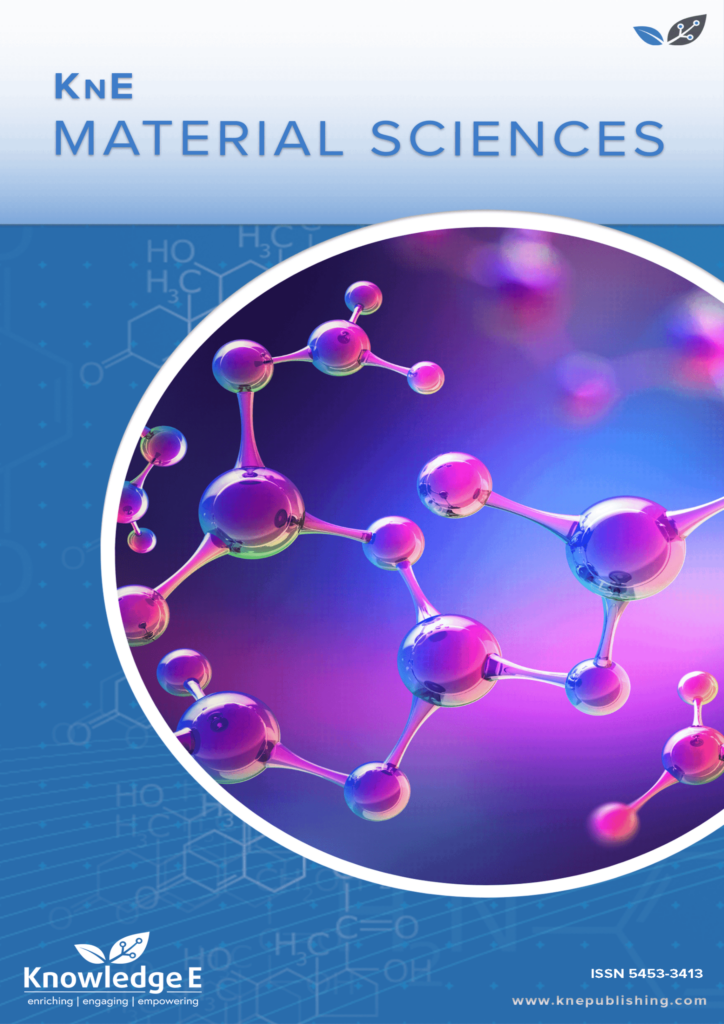
KnE Materials Science
ISSN: 2519-1438
The latest conference proceedings on physical materials, energy materials, electrical materials.
Porous TiNi Implants in Surgery of Spine Degenerative Diseases
Published date: Jul 17 2017
Journal Title: KnE Materials Science
Issue title: Shape Memory Biomaterials and Implants in Medicine (SMBIM)
Pages: 334-342
Authors:
Abstract:
Objective. To evaluate the efficacy of using porous TiNi implants for interbody fusion in the treatment of lumbar spine degenerative diseases.
Material and Methods. A total of 570 patients with degenerative lumbar spine disease were operated on with porous TiNi implants. Surgical treatment included stabilization and decompression and stabilization operations through posterior and anterior approaches and endoscopic transabdominal operations. Results of surgical treatment were followed-up for the period of 3 to 24 months. The change of pain syndrome was evaluated using a Visual Analogue Scale (VAS) and Oswestry Disability Index. The degree of interbody bone block formation was assessed based on X-ray and spiral CT data.
Results. Functional results of treatment were evaluated at 18-24 months after surgery as good and satisfactory in 94.1% of cases, and the formation of interbody bone-metal block was noted in 94.8% of cases.
Conclusion. Nikelid Titanium exhibits good osseointegration properties and can be used as osteoplastic material without additions of bone tissue, which simplifies operation, reduces its traumaticity, and provides good and satisfactory treatment results in 94.1% of cases.
References:
[1] V.E. Gunter, Biocompatible Materials and Implants with Shape Memory [In Russian], MIC, Tomsk, 2001.
[2] N.A. Korzh, A.E. Barysh, Ceramic spinal fusion in surgery of the cervical spine, Ortopediya, travmatologiya i protezirovanie [In Russian]. 3 (1998) 94-95.
[3] N.G. Fomichev, V.E. Gunter, N.V. Kornilov, et al., New Technologies in the Spine Surgery Using Porous Implants with Shape Memory [In Russian], Tomsk, 2002.
[4] N.I. Khvisyuk, S.D. Shevchenko, Some features of bone grafting in spine surgery, Abstracts of the 6th Congress of Ukranian traumatologists and orthopedists [In Russian]. Kiev, 1971, 131-133.
[5] W.J. Elias, N.E. Simmons, G.J. Kaptain, J.B. Chaddak, R. Whitehill, Complications of posterior lumbar interbody fusion when using a titanium threaded cage devise, J. Neurosurg. 93, 1 Suppl (2000) 45-52.
[6] F.J. Gil, J.A. Planell, Effect of Copper addition on the superelastic behaviour of Ni-Ti shape memory alloys for orthodontic applications, J. Biomed. Mater.Res. 48 (1999) 682-688 [RS61].
[7] V.E. Gunter, Delay Law and New Class of Materials and Implants in Medicine, Northampton, MA: STT Publishing, 2000.
[8] S.D. Kuslich, G. Danielson, J.D. Dowdle, J. Sherman, B. Fredrickson, H. Yuan, S.L. Griffith, Four-year follow-up results of lumbar spine arthrodesis using the bagby and kuslich lumbar fusion cage, Spine. 25 (2000) 2656-2662.
[9] G. Matge, T.A. Leclercq, Rationale for interbody fusion with threaded titanium cages at cervical and lumbar levels, Results on 357 cases, Acta Neurochir (Wien). 142 (2000) 425-433.
[10] P.W. Pavlov, M, Spruit, M. Havinga, P.G. Anderson, J. van Limbeek, W.C. Jacobs, Anterior
lumbar interbody f1usion with threaded fusion cages and autologous bone grafts, Eur. Spine
J. 9 (2000) 224-229.